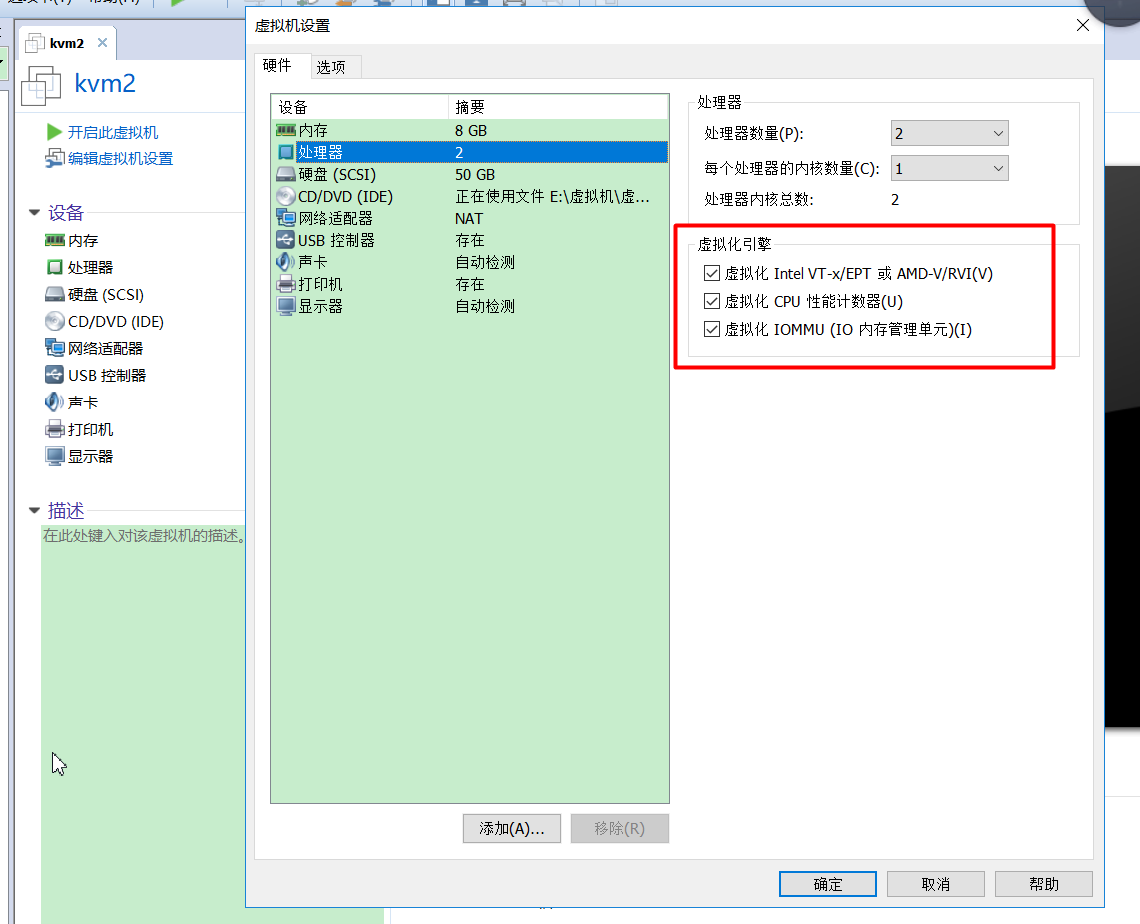

You might experience problems when creating a virtual machine. If you see: $ ls -l /dev/kvmĬrw-rw-+ 1 root root 10, 232 Jul 8 22:04 /dev/kvm Srwxrwx- 1 root libvirtd 0 14:54 /var/run/libvirt/libvirt-sockĪlso, /dev/kvm needs to be in the right group. $ sudo ls -la /var/run/libvirt/libvirt-sock The sock file should have permissions similar to: The critical point here is whether or not you have write access to /var/run/libvirt/libvirt-sock. you did not relogin) and you probably want to fix this before you move on. If on the other hand you get something like this: $ virsh list -allĮrror: failed to connect to the hypervisor
#Grep vmx proc cpuinfo install#
You can test if your install has been successful with the following command: The members of this group can run virtual machines. You need to ensure that your username is added to the groups: kvm and libvirtd.Īdm dialout cdrom floppy audio dip video plugdev fuse lpadmin admin sambashare kvm libvirtdĪfter the installation, you need to relogin so that your user becomes an effective member of kvm and libvirtd user groups. The group name is changed to libvirt, and you also need to be a member of 'kvm': (You can also 'newgrp kvm' in a terminal, but this will affect only that terminal.) You need to ensure that your username is added to the group libvirtd:Īfter this, you need to relogin so that your user becomes an effective member of the libvirtd group. You might also want to install virt-viewer, for viewing instances. Ubuntu-vm-builder powerful command line tool for building virtual machinesīridge-utils provides a bridge from your network to the virtual machines Qemu-kvm ( kvm in Karmic and earlier) is the backend

Libvirt-bin provides libvirtd which you need to administer qemu and kvm instances using libvirt Karmic (9.10) or earlier $ sudo aptitude install kvm libvirt-bin ubuntu-vm-builder bridge-utils Lucid (10.04) or later $ sudo apt-get install qemu-kvm libvirt-bin ubuntu-vm-builder bridge-utils You need to install a few packages first:Ĭosmic (18.10) or later $ sudo apt-get install qemu-kvm libvirt-daemon-system libvirt-clients bridge-utils If you use see i386, i486, i586 or i686, you're running a 32-bit kernel.įor the following setup, we will assume that you are deploying KVM on a server, and therefore do not have any X server on the machine. X86_64 indicates a running 64-bit kernel. Now see if your running kernel is 64-bit, just issue the following command: uname -m Note: lm stands for Long Mode which equates to a 64-bit CPU. If 0 is printed, it means that your CPU is not 64-bit. To see if your processor is 64-bit, you can run this command: egrep -c ' lm ' /proc/cpuinfo A 32-bit system can only host 32-bit guests. Also, a 64-bit system can host both 32-bit and 64-bit guests.On a 32-bit kernel install, you'll be limited to 2GB RAM at maximum for a given VM. To serve more than 2GB of RAM for your VMs, you must use a 64-bit kernel (see 32bit_and_64bit).
#Grep vmx proc cpuinfo 64 Bit#
Running a 64 bit kernel on the host operating system is recommended but not required. This is misleading and only means if KVM is *currently* available (i.e. NOTE: You may see a message like "KVM acceleration can/can NOT be used". You can still run virtual machines, but it'll be much slower without the KVM extensions. If you see : INFO: Your CPU does not support KVM extensions To see if it is enabled or not from xen, enter:Ĭat /sys/hypervisor/properties/capabilities If 1 or more it does - but you still need to make sure that virtualization is enabled in the BIOS.īy default, if you booted into XEN kernel it will not display svm or vmx flag using the grep command.

If 0 it means that your CPU doesn't support hardware virtualization. To see if your processor supports one of these, you can review the output from this command: Intel and AMD both have developed extensions for their processors, deemed respectively Intel VT-x (code name Vanderpool) and AMD-V (code name Pacifica). To run KVM, you need a processor that supports hardware virtualization.



 0 kommentar(er)
0 kommentar(er)
